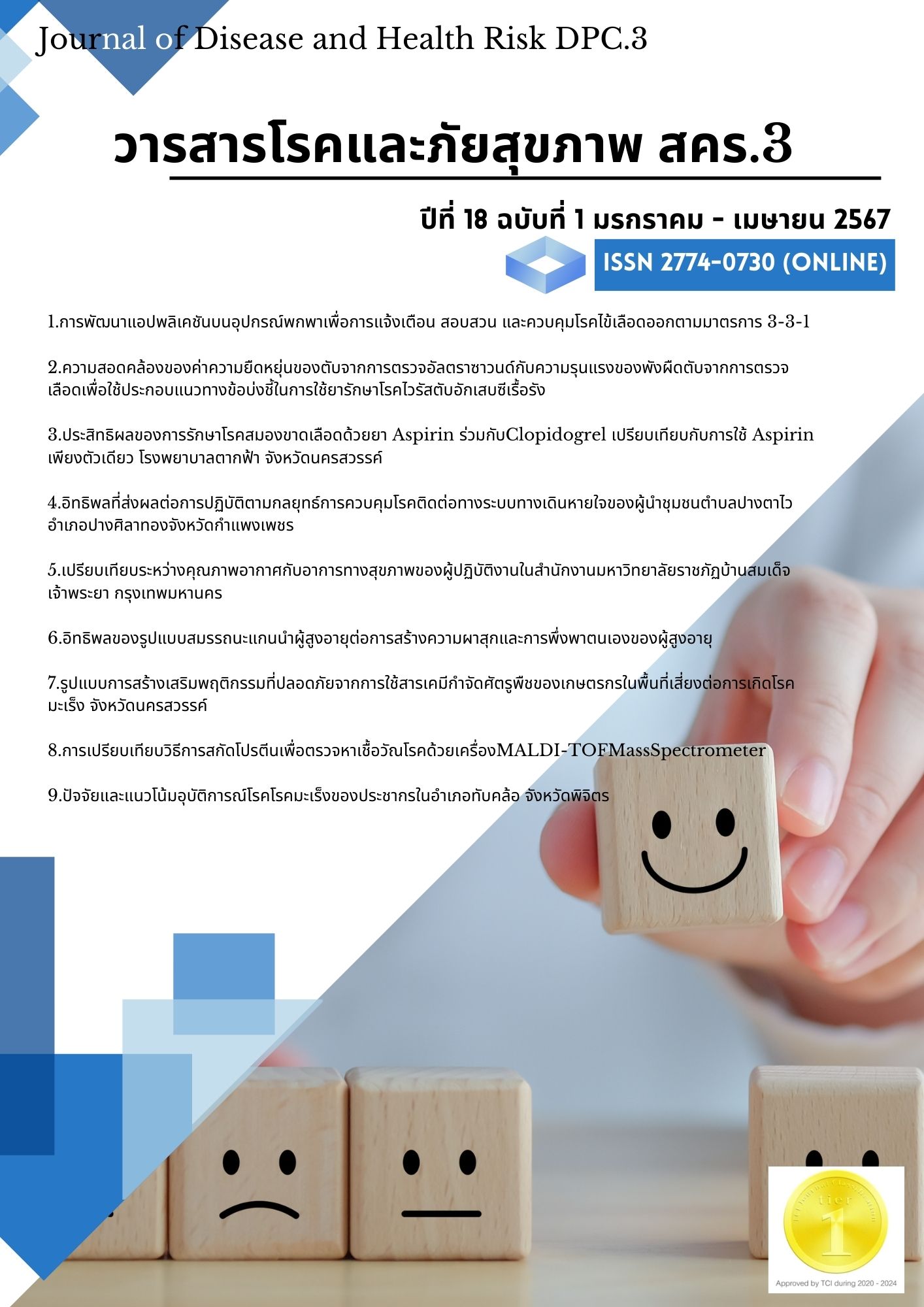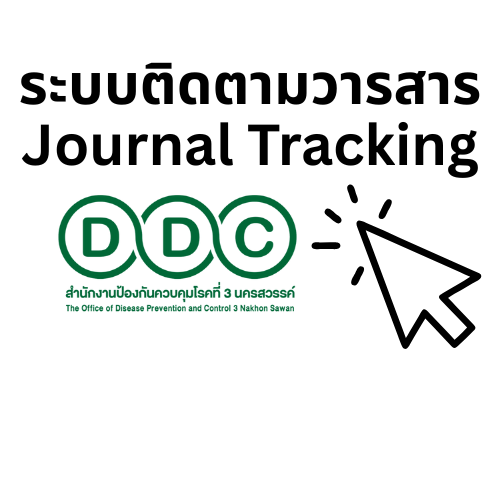The Development of Mobile Application for Dengue Case Investigation and Control with 3-3-1 Measure
Keywords:
Application, Mobile device, Investigation, Control of dengue outbreak according to the 3-3-1 measureAbstract
This research and development aimed to create a mobile application for monitoring and controlling the dengue outbreak following the 3-3-1 measure and study the effectiveness of the operation and user satisfaction with the application through four steps; step 1: the study of situation and problems analysis were conducted by documenting reviewing, step 2: the application was developed the conclusion from Step 1 and including suggestion from five experts. A suitable format was outlined based on the requirements of the target group, step 3: Application tried out 2 times; first time tried out in 30 dengue cases and result from focus group discussion with 9 public health officers who used the application were used to improve the system. The second time, the revised version was tested with 138 patients in the Songkhla province. step 4, the research evaluation and satisfaction acquired from October 2022 to November 2023. The results was as follows: 1) Control of the dengue according to the 3-3-1 measure in health area 12 was timely, with a rate of 67.19%. The real-time reporting of disease control from local to higher-level units was not accomplished. 2) The Dengue Alert application was created and available on Android (Google Inc., United States of America, version android 13) and iOS (Apple Inc., United States of America, version iOS 17), included features such as login, main page display, patient data admission, response of patient information, preliminary investigation data admission, and disease control within a 100-meter radius of the patient's house. The application enables real-time reporting of patient investigation. 3) Dengue control according to the 3-3-1 measure achieved an overall timeliness rate of 90.10%. User satisfaction with the application was very high in all features (Mean = 4.20 ± 1.06 SD). In conclusion, the Dengue Alert application was proved to be a valuable tool for accessible, efficient disease control and monitoring control measure.
References
Bureau of Epidemiology. Department of Disease Control. [Online].; 2023 [cited 2023 November. Available from: http://doe.moph.go.th/surdata/.
Division of Vector Borne Diseases. Department of Disease Control. [Online].; 2023 [cited 2022 November 30. Available from:
https://ddc.moph.go.th/dvb/news.php?news= 1133&deptcode=dvb.
Israsena Na Ayudhya P, Treerattanaphan C. DESIGN THINKING: LEARNING BY DOING. Thailand Creative and Design Center (TCDC). 2017.
Kirsch K. Bootcamp bootleg (d.school) Stanford, California: Hasso Plattner Institute of Design at Stanford; 2017.
Thanomsieng N. The sample size for logistic regression analysis using the formula by Hsieh, Bloch & Larson (1998) in the instructional materials. 516707 Categorical Data Analysis for Health Research Biostatistics, Faculty of Public Health, Khon Kaen University; 2000.
Bunnag M. The statistics for decision-making. Bangkok: Chulalongkorn University. 1994.
Rovinelli RJ, Hambleton RK. On the Use of Content Specialists in the Assessment of Criterion-Referenced Test Item Validity. Tijdschrift Voor Onderwijs Research. 1977; 2, 49-60.
Zimmerman DW, Zumbo BD, Williams RH. Bias in Estimation and Hypothesis Testing of Correlation. Psychologica. 2003; 24, 133-158.
Taber KT. The Use of Cronbach’s Alpha When Developing and Reporting Research Instruments in Science Education. Research in Science Education.; 48, 1273-1296.
Best J. Research in Education New Jersey: Prentice Hall, Inc; 1977.
Sokampang A. The operational guidelines for dengue fever control following the 3-3-1 strategy. [Online]. [cited 2023 November 20. Available from: http://odpc9.ddc.moph.go.th/download/331.pdf.
Jongthanomwiwat N. Kaewchan T. Ethisan P. Application Development on Android Smartphones to Assess Activities of Daily Living in Aging: ADLA for Public Health Personnel, Tambon Health Promoting Hospital, Sainoi District, Nonthaburi Province. Journal of Health Science. 2022; (851-859).
Huedhun K. The influence of Line Application in the Present Communication. Journal of Arts Management. 2017; (75-88).
Downloads
Published
How to Cite
Issue
Section
License
Copyright (c) 2024 Journal of Disease and Health Risk DPC.3

This work is licensed under a Creative Commons Attribution-NonCommercial-NoDerivatives 4.0 International License.
Copyright notice
Article published in the Journal of Disease and Health Risk DPC.3 Nakhon Sawan. It is considered a work of academic research and analysis as well as the personal opinion of the author. It is not the opinion of the Office of Disease Prevention and Control 3, Nakhon Sawan. Or the editorial team in any way Authors are responsible for their articles.
Privacy Policy
Name, address and e-mail address specified in the Journal of Disease and Health Risk DPC.3 Nakhon Sawan. It is used for identification purposes of the journal. And will not be used for any other purpose. Or to another person.









